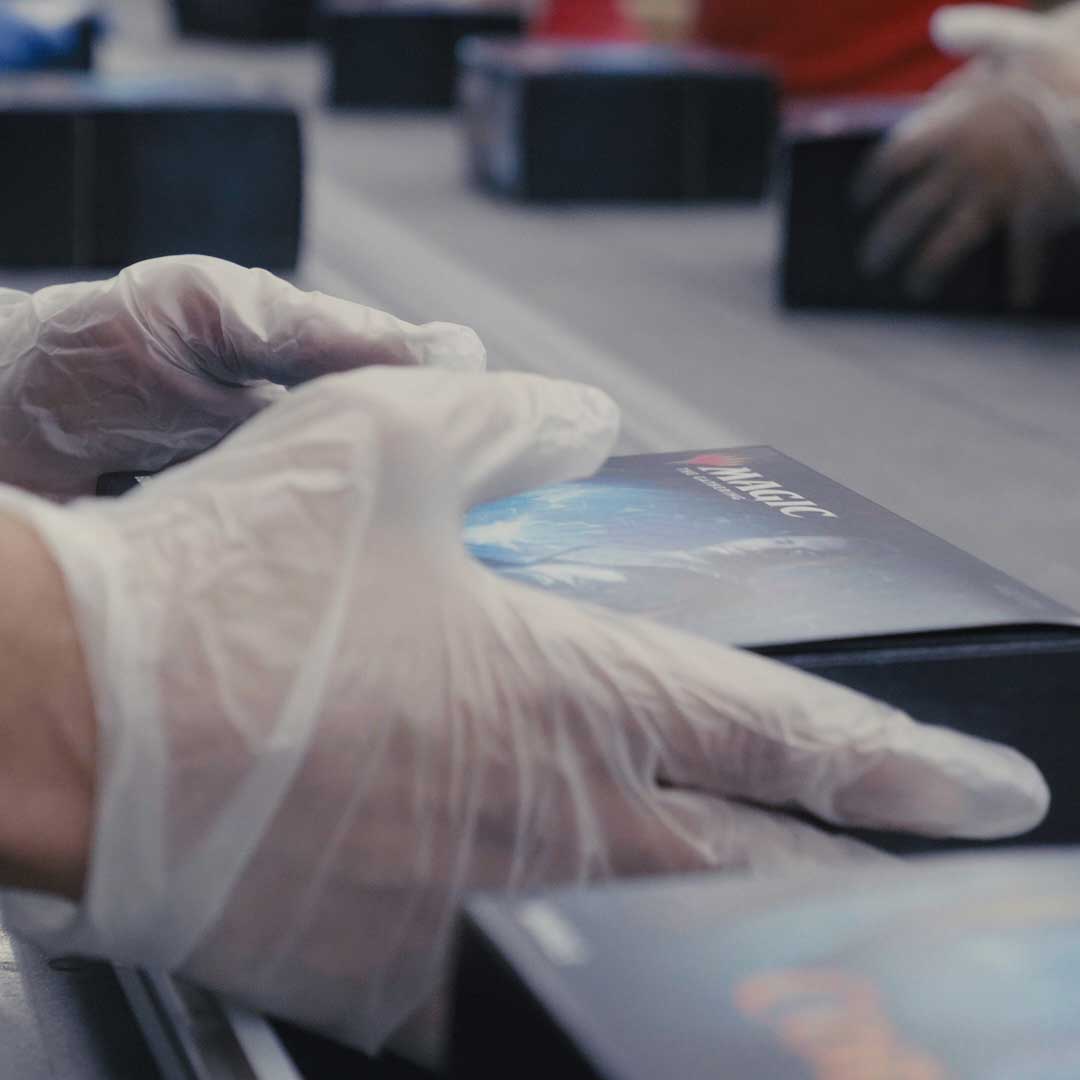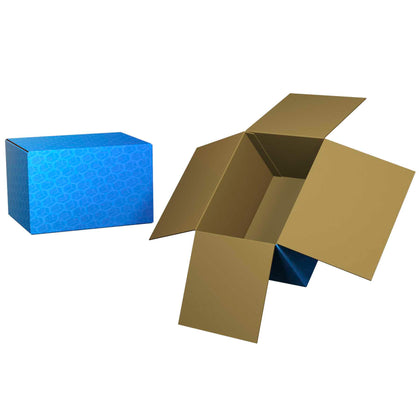

A packaging supply chain can be a tricky endeavor. There are so many things that can go wrong and heavily impact your bottom line. Or worse, halt everything in it's tracks. There are so many tips that the right manufacturer can provide you to help.
When shipping products, it is important for exporters and domestic traders alike to be aware of the potential challenges that packing can bring. Every piece of the puzzle has the chance to cause a huge issue. These include weight demands as well as breakage risks from excessive moisture or pilferage at customs- resulting in wasted money.
Table Of Contents
The Challenges Of Shipping Goods
First, breakage and weight usually impact each other. The majority of shipping commodities are transported in containers, while some unusual items are transported as break bulk cargo. For transportation, most commodities are likely to be stacked on top of one another. Breakage is more likely as a result of the greater weight. Harsh handling, such as pulling, shoving, or falling during unloading, can potentially cause goods to crack.
Second, moisture and condensation, is another major hazard. It's possible that cargo may be unloaded in the rain, or that the foreign port will lack covered storage facilities.
Finally, there is always the threat of theft and pilferage. The National Cargo Security Council estimates that stolen and lost cargo costs shippers $50 billion each year. In order to be successful in shipping in 2021.
1. Determine Your Packaging Needs
When it comes to shipping your products, the packaging is just as important. The right type of box will ensure that you're sending them off with minimal risk and maximum protection for their journey!
- What type of Packaging do I need?
- Are there new innovations I can implement?
- What type of product is it?
- What dimensions do I need?
- How many units do I need?
- How can this be an extension of my brand?
Packaging Dimensions
Start by measuring the height, width, and length of your product and everything you plan to put inside the box. Then, consider the type and size of any protective packaging inserts you plan to use. This will determine the size of the box you need.
How many units do you need?
How much do you plan to sell? Do you need 100 units? 500? 1,000? 10,000? Will you need recurring orders? This will directly affect your costs, and the more you order the better the deal you can get.
Whether you’re packing your own products or outsourcing the task, make sure that they are packaged well. Boxes protect against damage and tampering during shipment which could result in a loss for both customer satisfaction as well as damaged goods if there's an issue with receiving them at their destination point!
2. Choose The Best Packaging Solution
If you outsource the task, the third party, will know the best packaging solution for your products based on previous experience.
Packaging Materials
There is a whole range of options when it comes to packaging solutions. From traditionally used corrugated cardboard boxes, bubble wrap, Styrofoam peanuts to branded custom printed cartons and more. Each will impact your budget and shipments.
Strength
It's important to choose a solution that is strong enough to stand up against the rigors of transportation, but not so heavy as to create cost-prohibitive expenses. Strength and durability will be influenced by factors such as size, weight, bulkiness and fragility.
Weight & Volume
Packaging solutions should help keep your products safe from damage which can often cause breakages or even interrupt transportation. Overpacking with excessive packaging materials could result in excess expense. For example: Fill a box with 50 kgs of Styrofoam peanuts instead of 10kgs for packing sensitive items at high risk of breakage may seem like you have increased the protection it offers however this would impact your shipping costs based on weight!
Size
It's important to consider the size of the box. Remember to allow space for protective packaging inside your boxes. The bigger the box, it's likely to be heavier. Not to mention you will need different packaging materials to keep your products secure.
Always look for manufacturer stamps to find out about the material quality, size, and strength of the packaging.
3. Pack Your Items Properly
There’s no one-size-fits-all approach for shipment packaging. However, following a few best practices can go a long way.
Empty Space
Firstly, you should never leave any empty spaces inside the box. Empty spaces allow contents to move during transit, which can cause damage to the contents and the box.
Center The Items
Secondly, always place items to be shipped in the center of the box, at least 6cm from the box’s walls. This will provide support and prevent movement during shipment. If you're shipping a number of smaller items, group them together to prevent them from moving around inside the box.
Secure The Product
Third, use packaging materials to wrap and secure the product. Also consider using dividers to ship more than one item in a larger product. You should use inserts or small bubble cushioning for any particularly fragile products in the center of the box, including delicate electronic devices like phones and tablets. What's more, thicker packaging materials can help normalize product weight with the right amount of cushioning in order to avoid extra fees at customs.
Use A Contract Packager
Finally, try using a contract packager instead of doing it yourself. They will typically have experience with exactly what you are planning on executing.
Don’t use more material than what's really necessary to protect the products. This means you should avoid using excess packaging materials like multiple layers of boxes or Styrofoam peanuts (which can be expensive). Experts say that your box shouldn't feel heavy in your hand when it's empty, and if it does, then there is likely too much waste in its actual use.
4. Reduce Packaging Size
When it comes to packaging, the one size fits all approach does not apply. You should use different sized boxes for your products so you avoid unnecessarily wasting space and/or materials!
Look For Optimization
Selecting the right sized box for your product can save you hundreds of dollars in shipping costs. Using a smaller or larger box than what's needed to accommodate your products will result in wasted space.
Remove Excess Materials
When you're packaging, look for ways to remove excess materials or waste. These may include peeling off unnecessary stickers, tearing out unneeded pages from manuals, and cutting away the nylon straps that hold your electronic items in place. For example: Remove plastic bags inside your box without tearing them up!
Create Alternate Sizes
If you have multiple products, maybe you should make different packaging sizes to optimize the sizes. Creating product combo packs could help streamline all of your shipping options.
The easiest way to save on packaging is to place multiple products in a single, larger box. If you have more than one electronic device, consider placing them inside a multi-item box for added protection and space savings. Be on the look out for other packaging options that might work for you too.
5. Add A Secure Seal For Protection
When it comes to shipping your products, the right sealing materials are crucial for protecting them from weather conditions and preventing loss.
Tape It Up
To seal your box, use an appropriate amount of strong tape. Make sure that the ends are secure and have no gaps or loops. Box sealers are also effective in giving your packages an extra layer of security.
Cover It
Don't forget to cover the entire top and sides of your product with packaging materials such as bubble wrap or foam.
We recommend using reliable vendors that have proven track records in providing quality service with high-quality kits available on demand!
6. Clearly Label Shipments
The contents of the shipment, the sender, and the receiver's address are all clearly stated on the shipping label. This information is critical since it instructs logistics providers and customs officials on how to handle the item.
Clear Labels
Be sure to use a shipping label that is clear and legible. If necessary, consider providing supplementary labels with the same information as the main label for added protection from damages or losses. Make sure that your product description is accurate and precise. You should also include the contents of the shipment as well as an estimate of its value inside.
Most labels also include a tracking number or barcode that may be used to track where the product is in the supply chain. This reduces mix-ups and makes it simple to track down any lost products. This also contributes to the consumer's or client's security.
7. Find Dependable Suppliers
The importance of choosing the proper suppliers cannot be overstated.
When it comes to selecting suppliers, price isn't the sole consideration. What's more crucial is to choose dependable vendors. This enables you to fulfill your obligation to provide the highest possible quality to your consumer.
It's critical to conduct extensive research to find companies who have a solid reputation for maintaining excellent quality, customer service, packaging, and ethical business practices.
Be sure to audit your supply chain periodically and look for improvements.
8. Aim For Continuous Improvement
It's not over once you've developed a solid SCM. Continuous monitoring and evaluation is an important aspect of having an efficient SCM.
Constantly searching for ways to improve and innovate guarantees that considerable cost savings are realized, as well as increased speed to market and the highest levels of customer service. Continuous improvements are required in a world that is continuously evolving.
Never stop searching for ways to make things better.
9. Invest In Automation
Lorem ipsum dolor sit amet consectetur adipisicing elit. Illum neque eaque, autem sit soluta, voluptatum libero magnam tempore ullam at harum vel, ad reprehenderit, nemo veniam quas in voluptas hic. Lorem ipsum dolor, sit amet consectetur adipisicing elit. Natus id officia omnis suscipit aut architecto repellat a quia eaque reiciendis blanditiis perferendis hic, nihil, mollitia. Iste velit aperiam, numquam dolorem.
10. Improve Your Return Process
A solid SCM strategy has an efficient returns management system, as it is equally important to give returns as much attention as shipping out stock.
A solid returns management enables you to efficiently re-process or re-manufacture, as the case may be, in order to service customers quickly and efficiently.
The first thing you should do is track everything. One damaged sweater seems minor, but ten damaged sweaters in two days can flag an entire shipment of damaged sweaters! Little things can help you discover big problems.
As mentioned above, modern technology can play a huge role in great SCM. Avail of the best software you can find, and make sure it integrates with existing systems. To do its job, returns prevention software needs to access key data stores within your business. Make sure its API enables tight integration with your merchandising and warehouse management software.
Do not underestimate the value of a robust returns management process. It goes deeper than helping your company run more efficiently. It can have a huge impact on customer perception and trust in the brand, the company, and its products.
Improve Your Packaging Supply Chain Today
The 10 tips we've outlined will help you get your packaging supply chain in order and running smoothly. It's important to remember that a good SCM strategy requires continuous improvement, so be sure to revisit these tips often and look for ways to improve your process. Find a packaging manufacturer to get started.
Implementing even just a few of these tips can have a positive impact on your business. Contact us today for a custom quote today.




